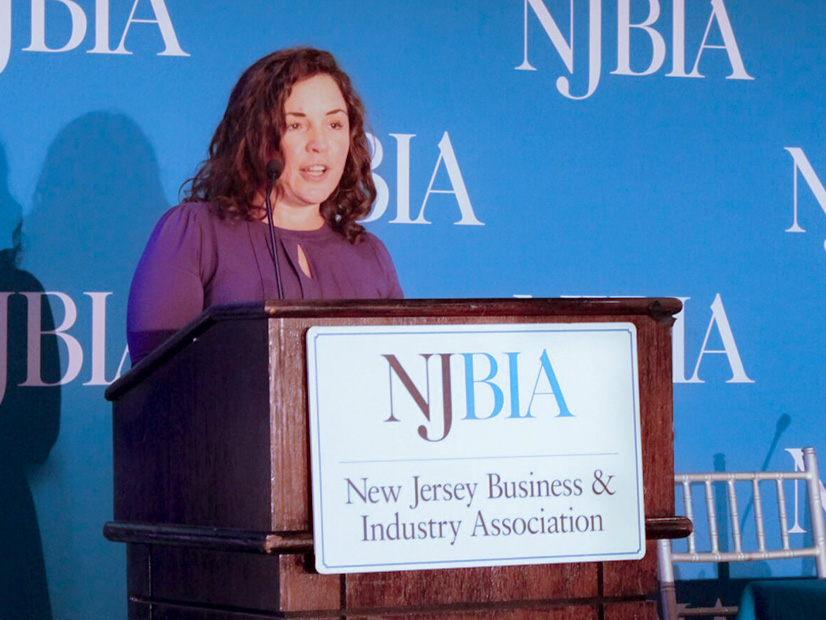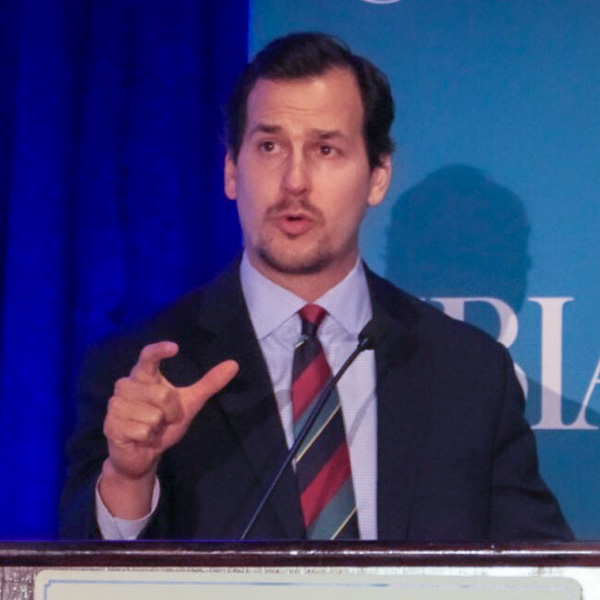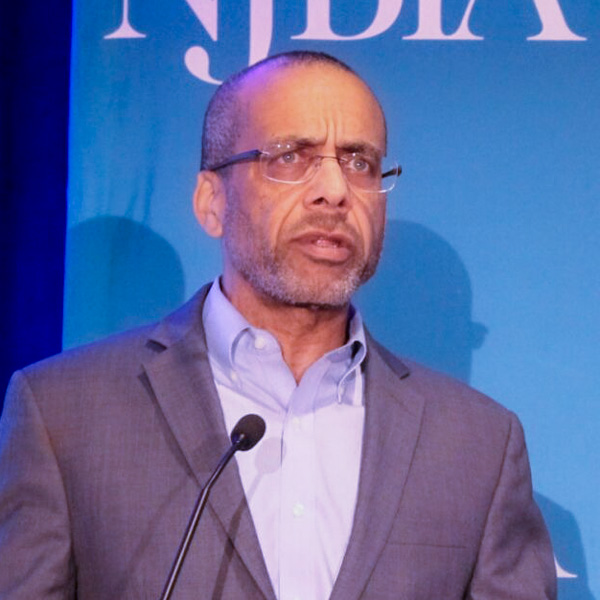EDISON, N.J. — New Jersey’s commitment to a rapid adoption of clean energy will be unwavering, the newly appointed head of the New Jersey Board of Public Utilities (BPU) told a conference of skeptical business leaders last week, underscoring their concern with the state’s push to make electricity the prime energy source.
In one of her first public speeches as BPU president, Christine Guhl-Sadovy told the annual energy conference organized by the New Jersey Business and Industry Association (NJBIA) that her clean energy policies would be largely unchanged from those of her predecessor, Joseph L. Fiordaliso, 78, who died unexpectedly on Sept. 7, while still in office. (See NJ BPU President Fiordaliso Dies.)
Guhl-Sadovy will “carry on his legacy on advancing the clean energy economy,” she said at the conference, characterizing her task as seeking to mitigate climate change while advancing the energy economy.
“For those people who say we are moving too fast or being too ambitious, my first response is always we can’t afford to wait,” said Guhl-Sadovy, who was appointed by Gov. Phil Murphy (D) on Sept. 11. That position is partly driven by the urgency of climate change, but also by the wealth of federal funding available to pursue clean energy projects, she said.
“Why wouldn’t we want to take full advantage of that?” she asked.
Uninformed Certainty
The BPU chief’s comments capped a day-long conference that highlighted the challenges facing New Jersey in meeting climate change and underscored the sense that even as Gov. Phil Murphy has moved aggressively to meet them, there’s a wide diversity of opinion in the business community about whether the strategy is the right one.
The NJBIA is one of the most vocal opponents of Murphy’s policies. The association has raised concerns about costs, especially with the offshore wind program, and has pushed back on Murphy’s effort to cut building emissions by electrifying heating and water systems. The association is leading a coalition of business groups in opposition to the state’s adoption of California’s Advanced Clean Cars II rules. (See NJ Businesses Demand Halt to EV Sales Promotion Rules.)
The conference offered a broad range of perspectives, including that of Judith Curry of the Climate Forecast Applications Network, who opened her presentation by saying Murphy’s climate change strategy reflects “political bias and uninformed certainty.” She argued that — despite the opinions of numerous scientists that climate change is an urgent, man-made threat — the change stems in large part from “natural climate variability” and the main problem is that the world has overplayed its response.
“Making Net Zero targets is causing us to make bad choices about future energy systems,” she said, arguing as an example that “widespread implementation of wind and solar power is impairing grid resiliency and reliability.”
Still, Ray Cantor, the NJBIA’s main lobbyist, framed the conference more moderately in his opening remarks.
“There’s no doubt that we have to decarbonize,” he said. “The real question is, how do we do it?”
Imbalance of Power
Whatever the path taken, the challenges facing the state, like others, will be immense as it puts together a network of solutions at unprecedented speed that can cut emissions while maintaining customer service, speakers said.
Timothy Burdis, lead strategist of state government policy for PJM, laid out the delicate balancing act the RTO will have to make in the next few years as New Jersey and the other 13 PJM members adopt differing levels of renewable energy development.
New Jersey at present generates about 14,000 MW, of which about one quarter is generated by nuclear energy and about two thirds by natural gas generators, according to his presentation. Solar energy accounts for about 1.5%, and the state, with a demand for about 20,000 MW of electricity, is an energy importer, and so relies on energy generated by other PJM members, Burdis said.
Yet even as states ramp up clean energy production, a crunch moment looms because generating capacity will decline as plants — mainly coal generators — are closed, either because they are uneconomic or state and federal environmental laws require it.
The PJM system has about 260,000 MW of new capacity waiting in the queue, of which about 26,000 MW is in New Jersey, Burdis said. Historically, only about 10% of the capacity in the queue makes it to completion, although that percentage may increase because of government funding and programs designed to support clean energy projects.
In comparison, PJM predicts that far more capacity — about 40,000 MW — will come offline in the next seven years, Burdis said.
“Even those resources that make their way through our queue are not necessarily coming online at the pace that we need them to,” Burdis said, citing financial, supply chain, siting and permitting issues. “With these resources coming on and the resources coming off, it starts to get a little tight at around 2030.”
Ensuring the tightness doesn’t become a crisis will partly require PJM and the utilities in its system to improve their performance, to ensure those facilities providing electricity can produce at critical moments, such as during storms, he said. In addition, PJM and utilities will have to manage carefully the timing of plant retirements to match the loss in power with the rate at which new plants are coming on, he said.
“It’s looking at the stuff coming off of the system and what do we need to do to preserve it if we have to, to encourage it to stick around, encourage it to make investments that it has to,” he said.
Decarbonization Playbook
Planning for the change will be key, not only to prepare for the dramatic increase in demand for electricity, but when it’s needed, said Richard T. Thigpen of PSEG. He presented a slide that showed that by 2040 or 2050 existing demand patterns will have reversed.
“The peak demand is going to switch from summer to winter,” he said. “And that’s something that the experts with planned distribution systems seem to talk about quite a bit, it’s something that we’re going to have to think about very carefully in terms of managing our costs as we go forward.”
Yet a well-planned, aggressive move toward renewable energy production at PJM can yield big benefits for the company’s customers, said Jesse Jenkins, an assistant professor and energy system engineer at Princeton University, outlining what he called a “decarbonization playbook.” Jenkins leads a team that has studied the impact on clean energy development of the federal Inflation Reduction Act and the infrastructure law.
Without the federal funding, the sector’s current trajectory would see emissions increase by about 14% between now and 2035 and the wholesale cost of electricity decrease by about 30%, he said. With federal funding in place, costs will decline by about one-third and emissions will reduce to 36% below 2021 levels, he said.
If PJM added to that by requiring 80% of its energy to be clean electricity, emissions would be cut 80% to 90% while customers would pay about the same as at present, or less, he said.
So “maintaining affordability, reliability, across the clean energy transition” is achievable if “we follow the decarbonization playbook,” he said.
To get there, New Jersey and other states need to take three steps, he said: build wind and solar projects at a “record pace;” expand the grid to handle electrification and renewable energy; and retire coal-fired generating plants.
New Fuel in Old Pipes
Representatives of natural gas supplying utilities urged the conference audience to not discount the use of gas in the state’s future energy mix, saying it would continue to be a key energy in any transition to renewable energy.
Stephen D. Westhoven, president and CEO of New Jersey Resources and New Jersey Natural Gas, said the state had invested too much into the infrastructure to discard it in favor of building up the electricity infrastructure.
“We’ve got a $17 billion head start. It’s really the investment that we’ve already made in the pipeline grid, here in New Jersey,” he said, adding that the 35,000 miles of pipeline “[supply] energy to 75% of New Jersey residents.”
“We have an electric system, we’ve got a pipeline system, and they work together to serve the energy needs of our state,” he said. “We’re already building renewable to put clean electrons on the electric grid. So, the question I ask is why don’t we have the same commitment to put renewable energy clean fuels into our pipeline system?”
That could include renewable natural gas, synthetic methane and hydrogen, Westhoven said, noting the federal government has allocated $8 billion for hydrogen hub development. It also could include biogas, extracted from the state’s landfills and could provide as much as 10% of existing customer usage, he said.
“They allow us to use our pipeline assets to reduce emissions,” he said.




